Si vous hésitez entre le ski nordique et le ski de randonnée, voici un résumé rapide : le ski nordique est idéal pour glisser sur un terrain plat ou légèrement vallonné, offrant un exercice cardio à faible impact. Le ski de randonnée s'adresse à ceux qui recherchent des aventures en pleine nature, combinant montées et descentes palpitantes sur neige vierge. Votre choix dépend de votre niveau de forme, de votre expérience en ski et de votre préférence entre pistes damées et nature sauvage.
Différences clés :
- Ski nordique : Équipement léger, skis à talon libre, et mouvement fluide et rythmique sur des pistes damées ou terrain plat. Parfait pour les débutants et les amateurs de fitness.
- Ski de randonnée : Équipement plus robuste, peaux de phoque, et un mélange de montée à pied et de descente à ski dans des zones enneigées et isolées. Idéal pour les skieurs expérimentés en quête d'aventure.
Comparaison rapide :
| Caractéristique | Ski nordique | Ski de randonnée |
|---|---|---|
| Terrain | Pistes plates/légèrement vallonnées et damées | Hors-piste raide et non tracé |
| Équipement | Skis légers et étroits | Skis plus courts et plus larges avec peaux |
| Effort physique | Faible à modéré | Élevé (montée + ski) |
| Niveau de compétence | Adapté aux débutants | Compétences avancées requises |
| Coût | Installation économique | Coûts initiaux plus élevés |
Si vous débutez en ski, le ski nordique est une excellente façon de commencer. Pour les amateurs de sensations fortes, le ski de randonnée offre la chance d'explorer la neige vierge. Dans les deux cas, vous profiterez du paysage hivernal tout en faisant de l'exercice. Prêt à dévaler la neige ? Entrons dans les détails !
Ski de randonnée nordique vs ski alpin de randonnée. Comparaison entre AT et descente en ski de fond.
Qu'est-ce que le ski nordique ?
Le ski nordique, aussi appelé ski de fond, est un sport d'hiver où vous utilisez des skis légers avec des talons libres pour glisser sur un terrain enneigé plat ou légèrement vallonné. Contrairement au ski alpin, qui consiste à descendre des pentes raides rapidement, le ski nordique se concentre sur un mouvement fluide et régulier. Ce n'est pas seulement pour profiter du paysage hivernal - c'est aussi un excellent entraînement à faible impact qui sollicite tout votre corps. Si vous cherchez un moyen de rester actif pendant les mois froids, cela pourrait être votre solution. Plongeons dans les techniques et l'équipement qui rendent le ski nordique unique.
Techniques de ski nordique
Il existe deux styles principaux de ski nordique : le classique et le skating.
- Le ski classique est un excellent point de départ pour les débutants. Il utilise une foulée diagonale, souvent appelée "poussée-glisse". Vous poussez avec un ski et glissez en avant sur l'autre en ligne droite.
- Le ski de skating est un peu plus avancé et imite les mouvements latéraux du patinage sur glace. C'est plus rapide et demande plus d'équilibre et de coordination.
Ken Knapp, éditeur émérite de REI, partage quelques conseils clés pour débuter :
"Si vous apprenez la position équilibrée, comment bien transférer le poids et comment coordonner les mouvements des bras et des jambes, vous aurez les bases pour commencer."
Équipement de ski nordique
L'équipement pour le ski nordique est axé sur l'efficacité et la facilité de mouvement. Voici ce qui le distingue :
- Skis : Plus longs, plus étroits et plus légers que les skis alpins. Ce design les rend plus faciles à manœuvrer et à transporter.
- Chaussures : Souples et flexibles pour soutenir le mouvement naturel de la cheville nécessaire à la technique de poussée-glisse.
- Bâtons : Plus longs que les bâtons de ski alpin, ils sont essentiels pour l'équilibre et la propulsion.
Les skis de fond classiques ont souvent des écailles sous la semelle pour éviter de glisser, tandis que les skis de skating sont plus courts et lisses, offrant une meilleure mobilité latérale. Une option remarquable pour la portabilité est le Snowfeet NORDIC Cross-country Skate Skis. Avec seulement 90 cm (35 pouces), ils sont bien plus courts que les skis traditionnels de 150 à 200 cm, ce qui les rend idéaux pour les voyageurs, les habitants d'appartements ou toute personne souhaitant éviter les tracas du transport de skis de longueur complète. Malgré leur taille compacte, ils conservent le design léger et efficace qui rend le ski nordique si agréable.
Meilleur terrain pour le ski nordique
Le ski nordique brille sur des pistes damées et des terrains plats ou légèrement vallonnés. Les parcs et sentiers dédiés sont des endroits parfaits, et le meilleur ? Pas besoin de billets de remontée coûteux. De nombreux sites populaires de ski nordique proposent des pistes damées qui guident vos skis, facilitant l'apprentissage et le plaisir du sport.
Pour ceux qui veulent passer à la vitesse supérieure, des événements comme la Coupe du Monde de la Fédération Internationale de Ski & Snowboard mettent en avant l'endurance du ski nordique, avec des courses allant jusqu'à 50 kilomètres (plus de 30 miles). Que vous glissiez dans un parc local ou que vous affrontiez un sentier de longue distance, le ski nordique offre quelque chose pour tout le monde.
Qu'est-ce que le ski de randonnée ?
Le ski de randonnée remplace les remontées mécaniques par vos propres jambes, vous permettant de grimper dans des zones montagneuses isolées par votre propre force. Contrairement au ski alpin traditionnel, où les remontées font le travail difficile, le ski de randonnée consiste à monter à pied avec un équipement spécialisé avant de descendre des terrains naturels intacts. C'est un mélange de ténacité d'alpinisme et de la sensation forte du ski, rendant chaque descente une véritable réussite. Plongeons dans la façon dont votre technique et votre équipement façonnent cette expérience.
Techniques de ski de randonnée
Le ski de randonnée comporte deux parties principales : la montée et la descente. Pour la montée, vous fixez des peaux de phoque sous vos skis. Ces peaux vous donnent de l'adhérence pour ne pas glisser en arrière, tandis que les fixations de randonnée laissent votre talon libre pour une foulée plus naturelle. Une fois au sommet, vous retirez les peaux, verrouillez vos fixations et vous préparez pour la descente.
La descente est là où les choses deviennent intéressantes. Contrairement aux pistes damées des stations, le ski hors-piste vous confronte à un mélange de conditions de neige et d'obstacles, nécessitant réflexion rapide et planification minutieuse. Beaucoup de skieurs débutent sous la direction de guides expérimentés pour apprendre à choisir des itinéraires sûrs et gérer un terrain changeant. Si vous visez quelque chose de plus exigeant, le ski-alpinisme monte d'un cran. Cette version avancée du ski de randonnée inclut souvent l'ascension de sommets glaciaires et nécessite des outils supplémentaires comme des crampons à ski et des piolets.
Équipement de ski de randonnée
Votre équipement peut faire ou défaire votre expérience de ski de randonnée, et tout est une question de trouver le bon équilibre entre efficacité en montée et performance en descente. Les skis de randonnée sont plus légers que les skis alpins classiques, ce qui facilite la montée, mais ils restent suffisamment stables pour des descentes imprévisibles. Les fixations de randonnée sont essentielles - elles permettent à votre talon de bouger librement à la montée mais se verrouillent solidement pour la descente.
Les chaussures de randonnée sont conçues avec un « mode marche » pour plus de flexibilité et de confort en montée, et elles sont plus légères et respirantes que les chaussures de station classiques. Les peaux de phoque se fixent sous vos skis pour vous donner l'adhérence nécessaire à la montée, tandis que les bâtons réglables avec rondelles poudreuse vous aident à rester équilibré et efficace dans la neige profonde. Et n'oublions pas la sécurité en hors-piste - le matériel d'avalanche et une formation adéquate sont indispensables.
Vous cherchez une option adaptée aux débutants ? Les Snowfeet* WALKSKI Backcountry Touring Skis (100 cm) sont une alternative compacte et portable aux équipements traditionnels. Ils sont plus légers et moins intimidants pour les novices, offrant une excellente façon de découvrir le hors-piste sans l'encombrement des skis de longueur complète. Parfaits pour affronter un terrain difficile sans compliquer les choses.
Meilleur terrain pour le ski de randonnée
Le ski de randonnée ouvre la porte à des terrains vierges bien au-delà de la portée des skieurs de station. Les zones hors-piste avec de la neige fraîche, des montées raides et une nature sauvage à perte de vue sont idéales pour ce sport. Chamonix, par exemple, est connue pour ses itinéraires hors-piste, offrant une poudreuse incroyable et des descentes inoubliables. Des destinations de rêve comme Tröllaskagi, en Islande, vous permettent de skier depuis des sommets imposants jusqu'à l'océan Arctique, tandis que l'Alaska propose des descentes de montagne raides associées à un climat maritime favorable à la neige.
Mais avec cette liberté vient la responsabilité. Le terrain hors-piste peut être imprévisible, avec des risques d’avalanche, une météo changeante rapidement et des endroits isolés où l’aide n’est pas proche. La formation à la sécurité avalanche, les compétences d’évaluation météo et la préparation aux urgences sont indispensables. Si vous débutez en ski de randonnée, commencer par une sortie guidée ou un cours de sécurité avalanche est une manière intelligente de renforcer votre confiance et vos compétences.
Ski nordique vs ski de randonnée : principales différences
Le ski nordique et le ski de randonnée impliquent tous deux de glisser sur la neige, mais ils sont à des mondes de distance en termes de technique, d’équipement et de terrain. Connaître ces différences peut vous aider à décider quel style correspond à votre forme physique, vos objectifs et le type d’aventure que vous recherchez.
Comment les techniques diffèrent
Le ski nordique consiste en des mouvements fluides et rythmiques sur un terrain principalement plat ou légèrement vallonné. Des techniques comme la foulée classique, le skating et la poussée double bâton sont conçues pour l'efficacité et la fluidité sur des pistes damées. Pensez-y comme un entraînement cardio sur neige, avec un accent sur l'endurance et la forme aérobie.
Le ski de randonnée, quant à lui, est un mélange de montée et de descentes sur neige non tracée. Vous utiliserez des peaux de phoque pour la montée, ce qui ressemble beaucoup à de la randonnée avec des skis aux pieds. La descente ? C’est là que le contrôle des carres et l’adaptation aux conditions de neige imprévisibles entrent en jeu. C’est plus exigeant physiquement, nécessitant à la fois force et endurance pour gérer les montées et descentes raides.
Ces différences de technique entraînent naturellement des besoins en équipement distincts, que nous allons explorer ensuite.
Différences d'équipement
Le matériel pour le ski nordique et le ski de randonnée reflète les exigences uniques de chaque sport. Les skis nordiques sont conçus pour la vitesse et l'efficacité - ils sont plus longs, plus étroits et plus légers, parfaits pour glisser sur des pistes damées. Vous trouverez deux types principaux : les skis classiques pour la foulée traditionnelle et les skis de skating pour un mouvement de patinage plus rapide et dynamique.
Les skis de randonnée, en revanche, sont plus courts, plus larges et plus robustes. Ce design offre une meilleure stabilité et un meilleur contrôle pour naviguer sur la neige vierge et les pentes descendantes. Les chaussures diffèrent aussi : les chaussures nordiques sont légères et flexibles, offrant plus de mobilité à la cheville, tandis que les chaussures de randonnée sont rigides et soutenantes pour gérer la puissance supplémentaire nécessaire aux montées et descentes.
Voici une comparaison rapide pour tout décomposer :
| Équipement | Ski nordique | Ski de randonnée |
|---|---|---|
| Skis | Longues, étroites, légères | Courtes, larges, rigides |
| Chaussures | Légers, flexibles | Rigides, de soutien |
| Bâtons | Plus longues pour la propulsion | Plus courtes pour l'équilibre |
| Extras | Minimal | Peaux de phoque, équipement de sécurité avalanche |
Les fixations sont une autre différence clé. Les fixations nordiques attachent votre chaussure par l'avant, laissant le talon libre pour ce glissement classique. Les fixations de randonnée permettent aussi un talon libre pour la montée mais peuvent se verrouiller pour les descentes. De plus, le ski de randonnée nécessite des essentiels supplémentaires comme les peaux de phoque et l'équipement de sécurité avalanche.
Le matériel que vous choisissez impacte directement où vous pouvez aller, ce qui nous amène au terrain.
Terrain et exigences d'accès
Le type de terrain que chaque sport aborde est une grande partie de ce qui les différencie. Le ski nordique prospère sur des pistes damées et un terrain ondulé, souvent trouvé dans les parcs locaux, les réseaux de sentiers ou les centres nordiques dédiés. C'est facile d'accès et ne nécessite pas de permis spéciaux ni de forfaits de remontée.
Le ski de randonnée est une aventure en pleine nature, à part entière. Il s'agit d'explorer la neige vierge dans des zones montagneuses reculées. Cela signifie souvent conduire jusqu'aux points de départ, marcher, et faire face à des conditions imprévisibles. Ce n'est pas seulement skier - c'est maîtriser la sécurité avalanche, lire les conditions météorologiques, et naviguer sur un terrain loin des sentiers battus.
Pour ceux qui recherchent des options polyvalentes, des produits comme les NORDIC Cross-country Skate Skis et les WALKSKI Backcountry Touring Skis de Snowfeet offrent des designs compacts adaptés aussi bien aux pistes damées qu'aux escapades en pleine nature. Que vous glissiez dans un parc ou que vous traciez de nouvelles pistes dans la nature sauvage, il y a un équipement pour chaque type de skieur.
sbb-itb-17ade95
Comment choisir la bonne activité
Choisir entre le ski nordique et le ski de randonnée dépend de votre niveau de forme, de votre expérience en ski, de vos préférences de terrain et de votre budget. Décomposons cela pour que vous puissiez trouver ce qui vous convient le mieux.
Facteurs clés à considérer
Condition physique et exigences physiques
Le ski nordique est une excellente option si vous recherchez un entraînement cardio régulier. Ce n'est pas trop intense et convient à la plupart des niveaux de forme physique. Vous glisserez le long de pistes damées à un rythme gérable, ce qui le rend idéal pour un exercice constant. En revanche, le ski de randonnée est une activité plus exigeante. Il nécessite une endurance et une force sérieuses, surtout lorsque vous grimpez des pentes raides ou portez vos skis sur le dos.
Expérience en ski
Si vous êtes débutant, le ski de fond classique est une excellente façon de vous initier aux sports d'hiver. Il est accessible aux débutants et convient aux skieurs de tous niveaux. Le ski de randonnée, cependant, est une autre histoire. Il exige des compétences avancées en descente pour gérer des pentes raides et imprévisibles.
Préférences de terrain
Le ski nordique est parfait pour les terrains plats, les collines douces et les pistes damées. Vous pouvez même explorer des lacs gelés ou des zones sauvages sans trop de dénivelé. Le ski de randonnée, en revanche, s'épanouit dans des environnements montagneux escarpés. Si vous recherchez des montées verticales et des descentes palpitantes, c'est votre choix.
Considérations budgétaires
Le ski de fond est l'option la plus économique. Vous n'aurez pas besoin de billets de remontée coûteux - les forfaits journaliers pour les pistes de ski de fond coûtent en moyenne environ 15 $, contre 30 à 180 $ pour les stations alpines. De plus, un équipement complet de ski de fond coûte moins cher que le matériel alpin traditionnel. Il n'est pas étonnant que le ski de fond ait attiré plus de 5,2 millions d'Américains l'année dernière, avec une croissance de la participation de 6 % - l'accessibilité financière parle d'elle-même.
Que vous restiez sur des pistes damées ou que vous vous aventuriez en pleine nature, avoir le bon équipement fait toute la différence. C'est là que Snowfeet* entre en jeu.
Pourquoi choisir les produits Snowfeet*
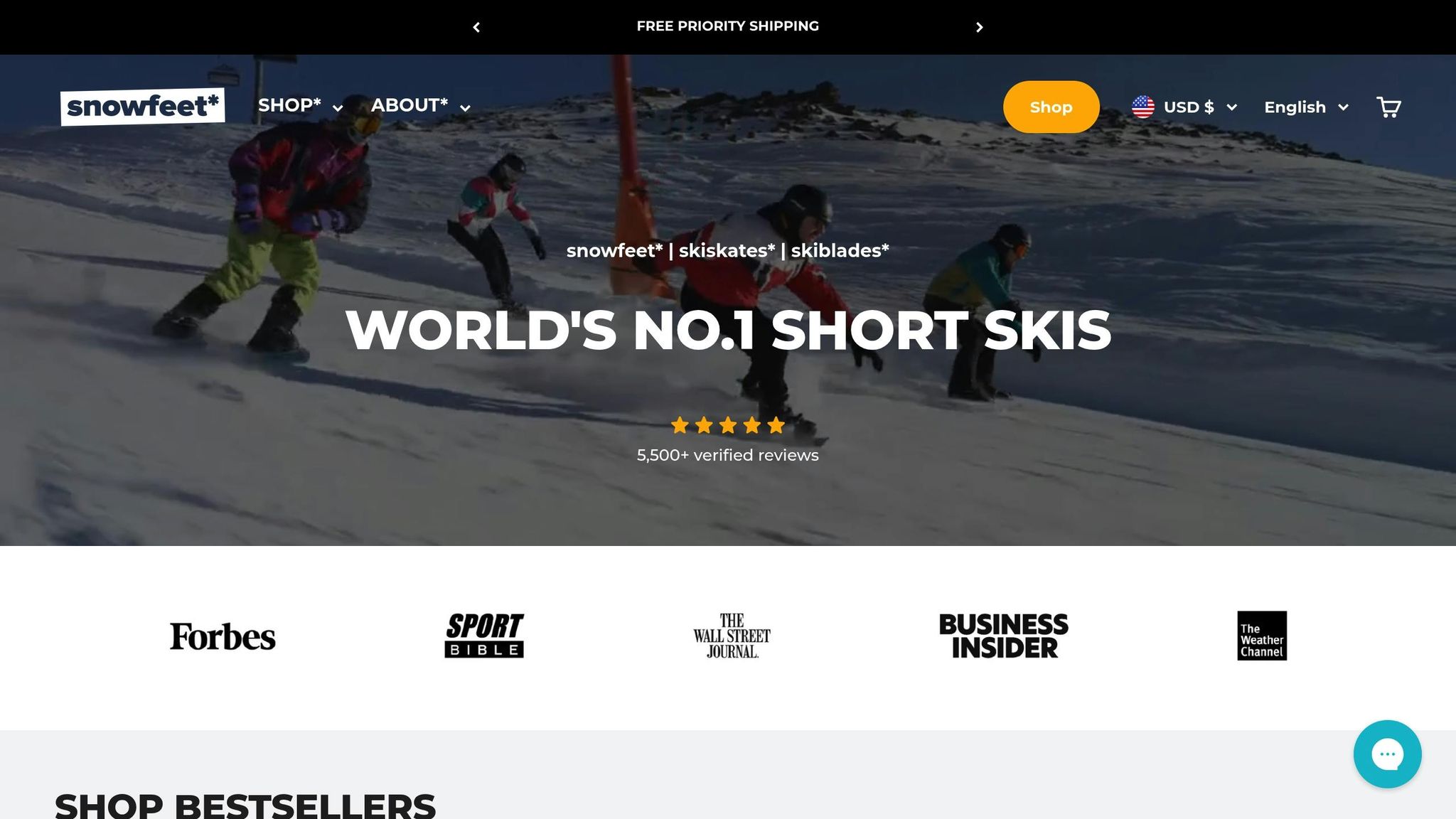
Quand il s'agit d'équipement, la polyvalence est essentielle, et Snowfeet* répond à cette exigence. Leur matériel compact et abordable s'associe à vos chaussures d'hiver habituelles, vous évitant ainsi de dépenser une fortune dans des chaussures spécialisées. Par exemple, les NORDIC Cross-country Skate Skis (environ 35 pouces de long) et les WALKSKI Backcountry Touring Skis (environ 39 pouces) sont conçus pour fonctionner avec des chaussures d'hiver ordinaires. Cela élimine le besoin de bottes coûteuses, qui peuvent rapidement faire grimper la facture.
Le matériel Snowfeet* permet non seulement d'économiser de l'argent, mais aussi de simplifier l'apprentissage. Alors que les équipements traditionnels peuvent prendre des semaines à maîtriser, la plupart des utilisateurs se sentent à l'aise à la glisse avec les produits Snowfeet* après une seule session. Et le prix ? Les kits traditionnels pour la montagne peuvent coûter près de 1 000 $, mais les NORDIC Cross-country Skate Skis Snowfeet* commencent à seulement 150 $. Vous bénéficiez d'une capacité multi-terrain sans vous ruiner - que vous glissiez sur des pistes damées ou exploriez des chemins hors des sentiers battus.
Un autre atout majeur est la portabilité. Contrairement aux skis traditionnels qui nécessitent des barres de toit ou des sacs volumineux, les produits Snowfeet* tiennent dans un sac à dos classique. Vous pouvez facilement les emmener en randonnée, dans un parc local, ou même les utiliser dans votre jardin après une chute de neige fraîche.
Pour les débutants, Snowfeet* élimine l'intimidation des sports d'hiver. Pas besoin de leçons coûteuses ni de matériel spécialisé - enfilez simplement vos bottes d'hiver et commencez à explorer. Que vous restiez dans les parcs locaux ou que vous affrontiez des sentiers en pleine nature, Snowfeet* rend tout facile et accessible.
Snowfeet* vs marques traditionnelles de ski et snowboard
Snowfeet* apporte une touche nouvelle aux sports de neige, rivalisant avec de grands noms comme Rossignol, K2 et Burton. Alors que ces marques se concentrent sur du matériel très spécialisé destiné à des conditions spécifiques, Snowfeet* emprunte une autre voie - offrant un équipement compact et polyvalent prêt pour toutes les sorties enneigées. Découvrons ce qui le distingue.
Une portabilité qui gagne à chaque fois
Les skis et snowboards traditionnels ? Oui, c'est un peu encombrant à transporter. Entre les barres de toit, les sacs de voyage volumineux et la taille même du matériel, c'est beaucoup. Snowfeet*, en revanche, simplifie les choses. Des produits comme les NORDIC Cross-country Skate Skis et les WALKSKI Backcountry Touring Skis sont si compacts qu'ils tiennent dans un sac à dos classique. Pas besoin de chaussures spéciales non plus - vos chaussures d'hiver habituelles suffisent. Cela signifie moins de matériel à emporter et plus de temps pour profiter de la neige.
Une courbe d'apprentissage plus douce
Soyons honnêtes, le ski et le snowboard traditionnels peuvent être intimidants. Ils s'accompagnent souvent de courbes d'apprentissage raides et de leçons coûteuses. Snowfeet* change la donne avec un design axé sur la stabilité et le contrôle. La plupart des gens peuvent s'y habituer dès le premier jour - pas besoin de leçons formelles. De plus, vous n'êtes pas lié à une station de ski. Que ce soit dans votre jardin, un parc local ou une colline à proximité, vous pouvez vous entraîner partout où il y a de la neige.
"Parfait ! Je ne cherche pas des skis à proprement parler, juste une approximation rudimentaire pour rendre la glissade plus efficace et agréable." – Coonobi, Skieur
Un équipement, plusieurs terrains
Le matériel traditionnel tend à être spécifique au terrain. Skis alpins pour les pistes damées, skis de fond pour les sentiers plats, snowboards pour la poudreuse - vous voyez l'idée. Snowfeet* évite toute cette spécialisation et propose un équipement qui fonctionne presque partout. Que vous dévaliez une piste damée, exploriez des sentiers hors-piste ou que vous vous amusiez simplement sur une colline enneigée, Snowfeet* s'adapte à l'environnement. Il s'agit de maximiser votre plaisir sans être limité par un équipement trop spécifique.
"haussement d'épaules Ce sont des jouets d'aventure, pas des skis à proprement parler." – cantunamunch, Skieur, Supporteur SkiTalk
Conclusion : Quelle activité devriez-vous essayer ?
Le ski nordique est parfait si vous aimez l'endurance régulière sur un terrain doux, tandis que le ski de randonnée est idéal pour les amateurs de sensations fortes en quête d'aventures hors-piste. Votre choix dépendra de votre niveau de forme, de vos compétences et de votre investissement dans le matériel. Si vous privilégiez l'exploration paisible et la connexion avec la nature, le ski nordique est un excellent choix. Mais si la poudreuse vierge et la nature sauvage isolée vous attirent, le ski de randonnée pourrait être votre voie.
Parlons maintenant d'un véritable changement de jeu : Snowfeet*. Cette option innovante bouleverse les codes en offrant une solution unique et polyvalente qui remplace un équipement volumineux et coûteux. Oubliez de dépenser une fortune dans des setups spécialisés - Snowfeet* simplifie tout.
Voici la répartition des coûts : un équipement typique de ski de randonnée peut vous coûter environ 2 200 $. Comparez cela aux Snowfeet* WALKSKI Backcountry Touring Skis, qui ne coûtent que 490 $. Et le meilleur ? Pas besoin de chaussures spéciales. Ils fonctionnent avec vos chaussures d'hiver habituelles ou vos boots de snowboard, ce qui les rend super pratiques.
Avec plus de 5 500 avis vérifiés et une impressionnante note de 4,9 sur 5 étoiles, Snowfeet* prouve que compact ne signifie pas moins performant. Que vous glissiez sur des pistes de ski de fond, affrontiez des pentes hors-piste ou profitiez simplement d'une colline enneigée près de chez vous, ces mini skis sont prêts pour l'aventure. Conçus pour les 5 à 105 ans, ils sont faciles à utiliser dès la sortie de la boîte.
FAQ
Quelles conseils de sécurité devrais-je suivre lors d'une randonnée à ski hors-piste ?
Lorsque vous partez pour une randonnée à ski hors-piste, la sécurité n'est pas seulement importante - elle est non négociable. Commencez par suivre un cours de sécurité avalanche. Cela vous enseignera les compétences indispensables pour naviguer en terrain avalancheux. Et n'oubliez pas l'essentiel : portez toujours un détecteur de victimes d'avalanche, une sonde et une pelle. Ces outils peuvent sauver des vies.
Il est aussi judicieux de s'associer à des skieurs expérimentés qui connaissent bien le terrain hors-piste. Leur savoir peut être inestimable, surtout dans des situations délicates.
Avant de partir, vérifiez les prévisions d'avalanche pour votre région. Faites attention aux conditions de neige et évitez les zones à haut risque comme les pentes de plus de 30 degrés ou les zones chargées par le vent. Surveillez aussi la météo - les changements soudains peuvent affecter la stabilité de la neige.
En vous préparant correctement, en restant vigilant et en connaissant le terrain, vous pouvez profiter du frisson du ski hors-piste avec un peu plus de sérénité.
En quoi les produits Snowfeet* diffèrent-ils de l'équipement de ski traditionnel, et pourquoi sont-ils plus faciles à utiliser ?
Le matériel Snowfeet* propose une nouvelle approche de l'équipement de ski traditionnel avec sa taille compacte, sa légèreté et son design convivial. Oubliez la corvée de transporter de longs skis lourds ou d'avoir des compétences expertes pour profiter des pistes. Snowfeet* sont plus courts, plus faciles à manier, et parfaits pour les débutants ou toute personne cherchant une manière simple et ludique de profiter de l'hiver.
L'un des meilleurs atouts ? Ils sont super portables. Vous pouvez affronter différents terrains sans avoir besoin de beaucoup de matériel supplémentaire. De plus, ils sont faciles à transporter et à ranger comparés aux skis traditionnels. Que vous soyez curieux du ski nordique ou que vous vous lanciez dans le ski de randonnée, Snowfeet* offrent une option flexible, adaptée aux débutants, qui rend la nature plus accessible - et beaucoup plus amusante.
Quels sont les meilleurs endroits et conditions pour essayer le ski nordique pour les débutants ?
Pour les débutants en ski nordique aux États-Unis, commencer dans des endroits avec des pistes lisses, bien entretenues et des installations adaptées aux débutants est essentiel. Steamboat Ski Touring Center au Colorado et Tamarack Cross-Country Ski Center en Californie sont des endroits fantastiques pour s'initier à ce sport. Les deux offrent des pistes faciles et des cours parfaits pour les novices.
Si vous êtes dans le Nord-Ouest Pacifique, découvrez Snoqualmie Pass ou Stevens Pass dans l'État de Washington. Ces endroits offrent non seulement des pistes adaptées aux débutants, mais aussi des vues magnifiques qui rendent l'apprentissage encore plus agréable. L'essentiel est d'avoir un environnement sûr et amusant pour commencer - et ces lieux le garantissent !





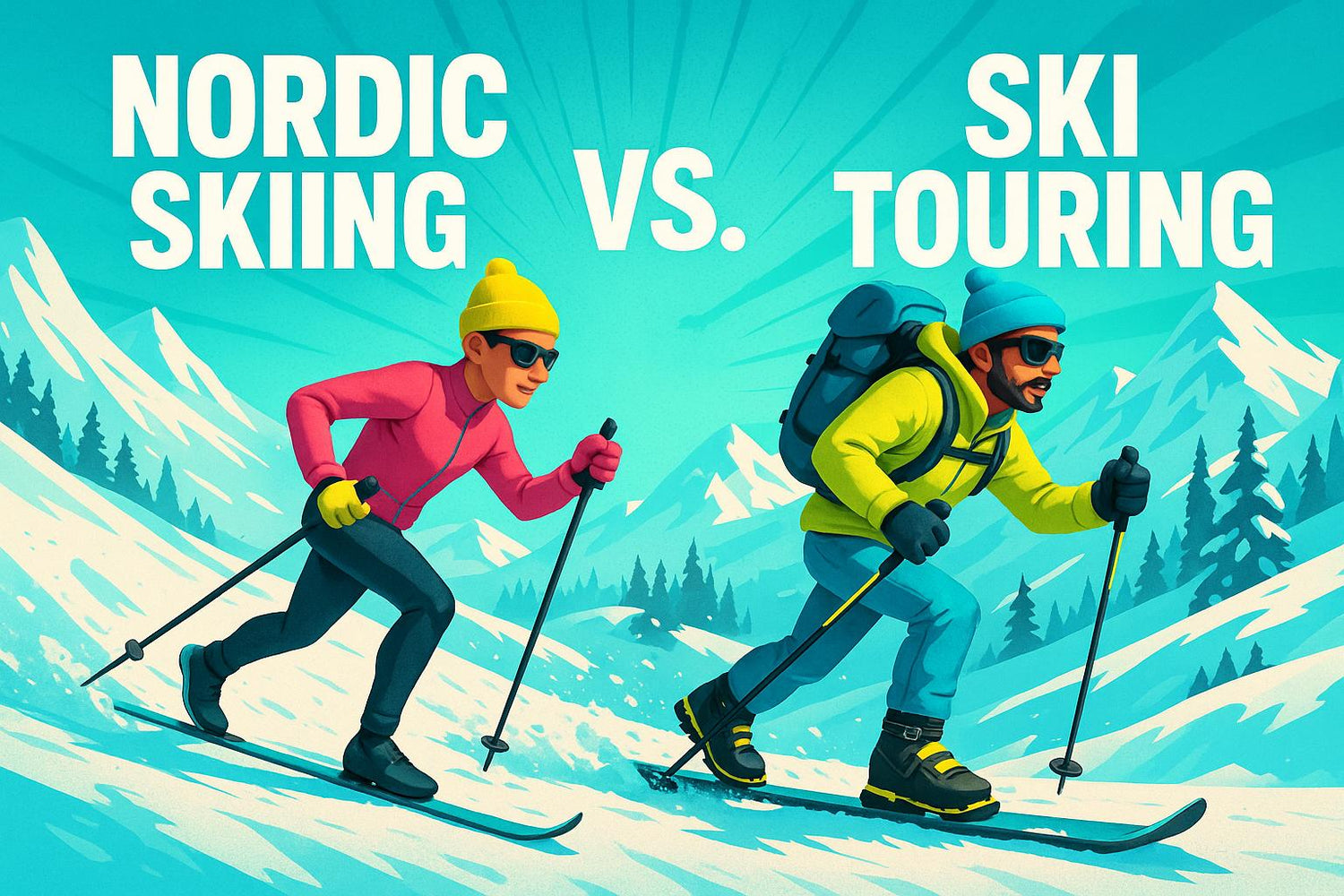
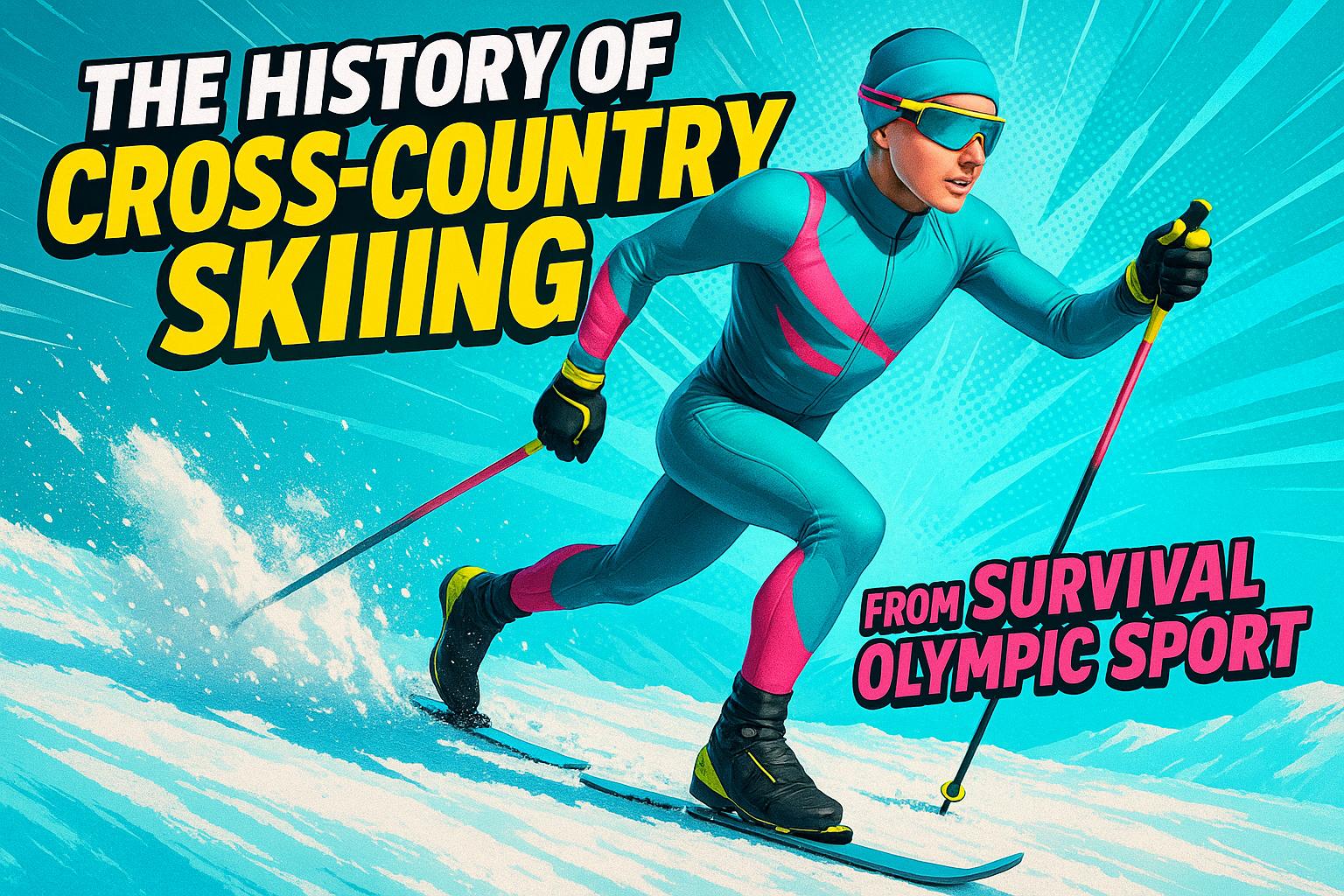
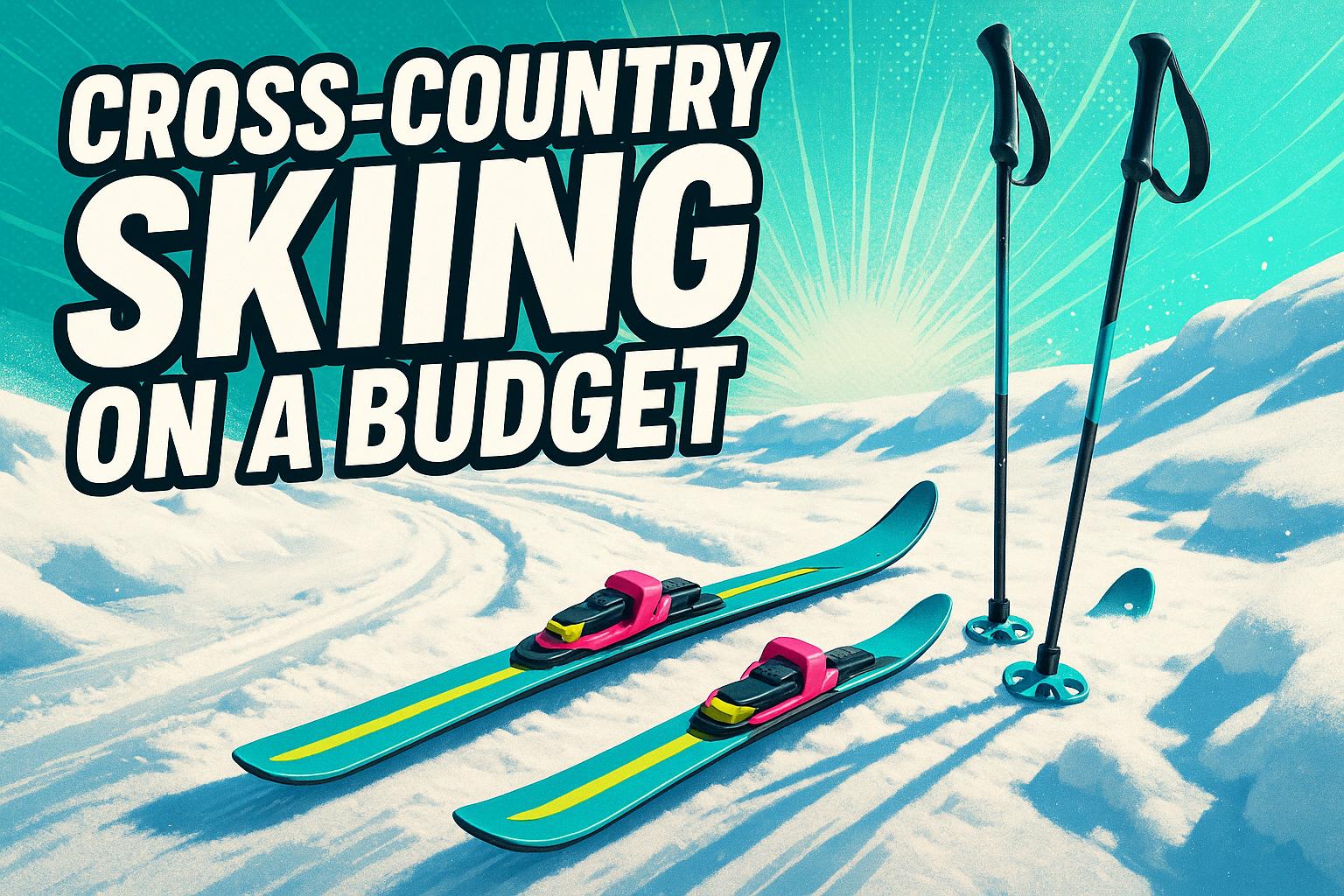







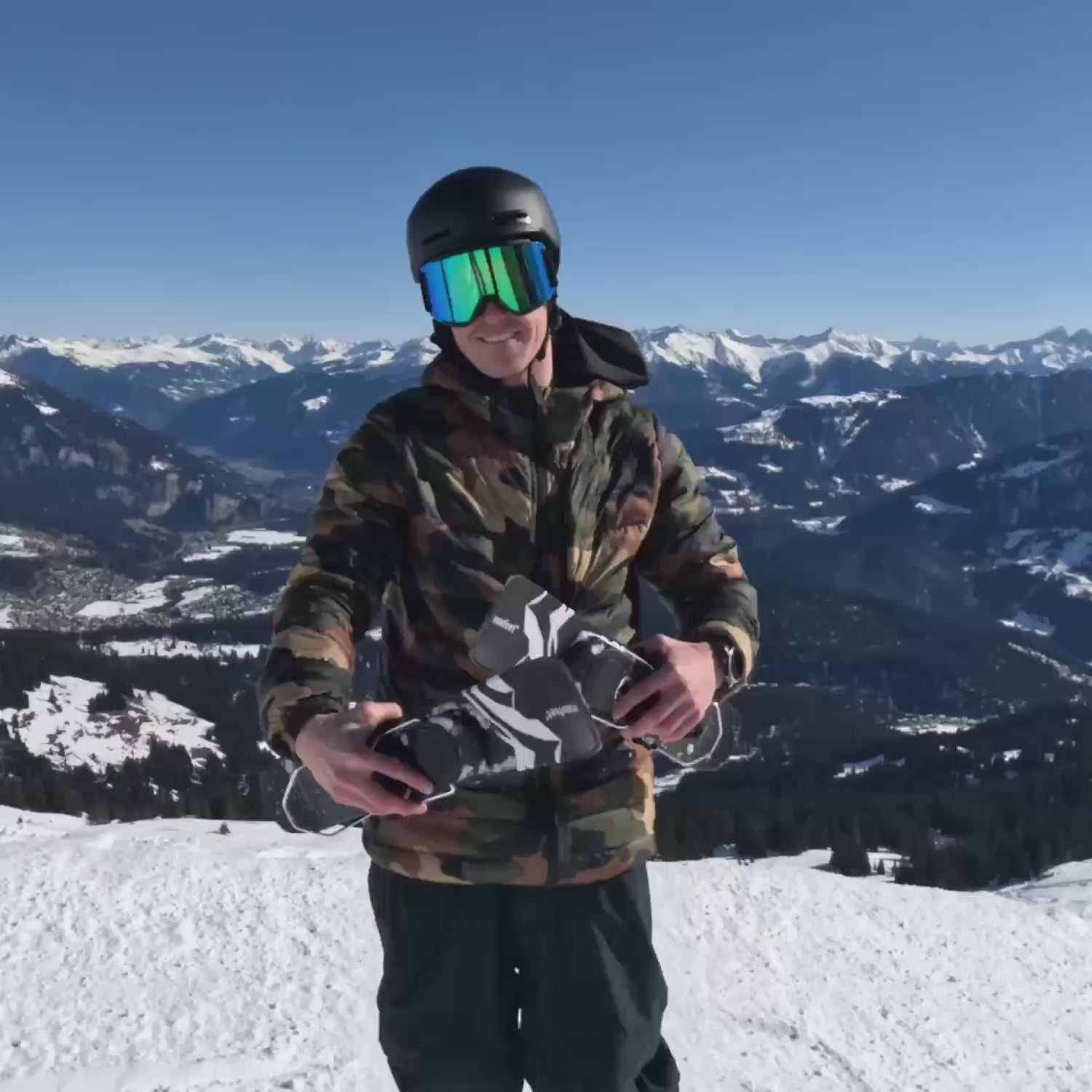

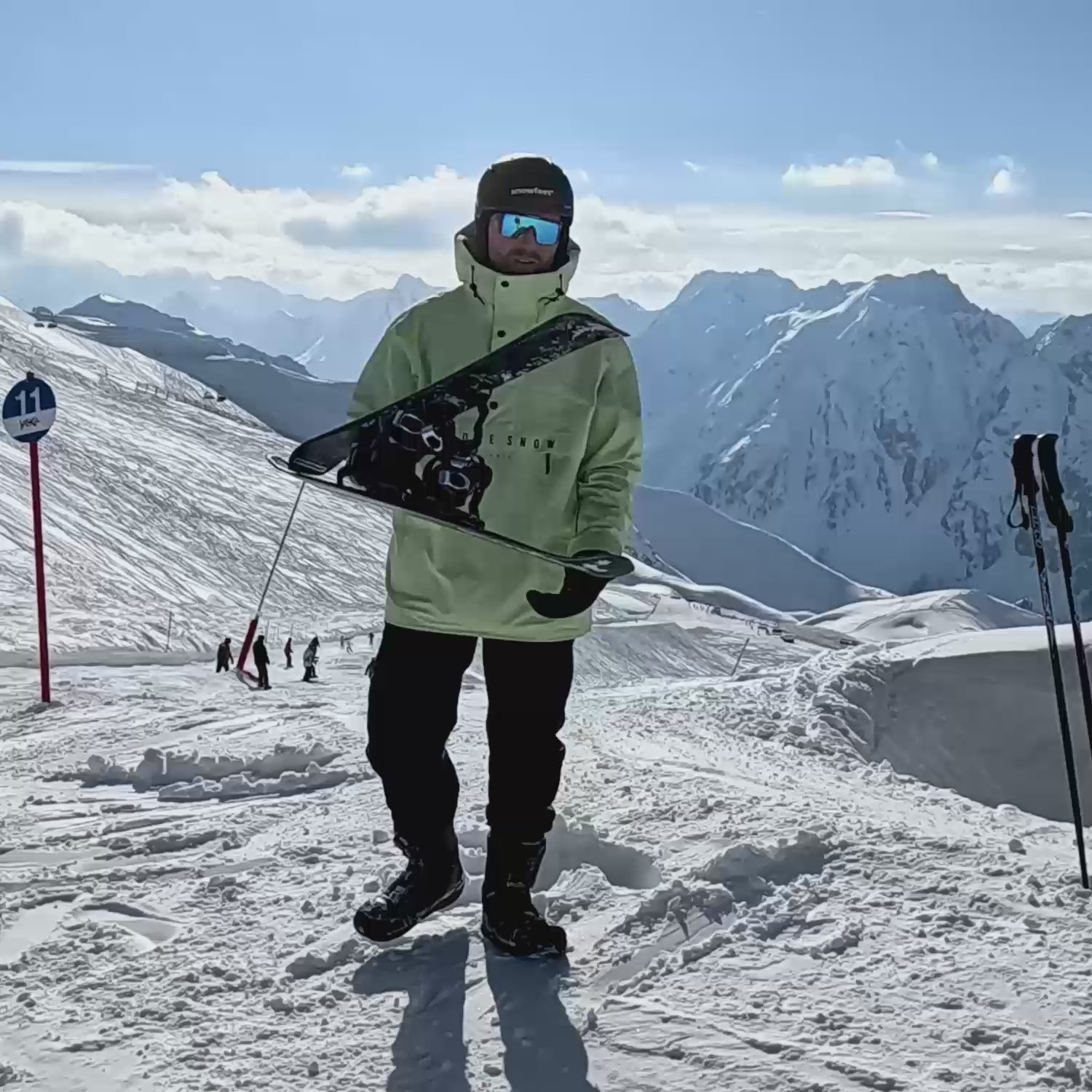
Laisser un commentaire
Ce site est protégé par hCaptcha, et la Politique de confidentialité et les Conditions de service de hCaptcha s’appliquent.